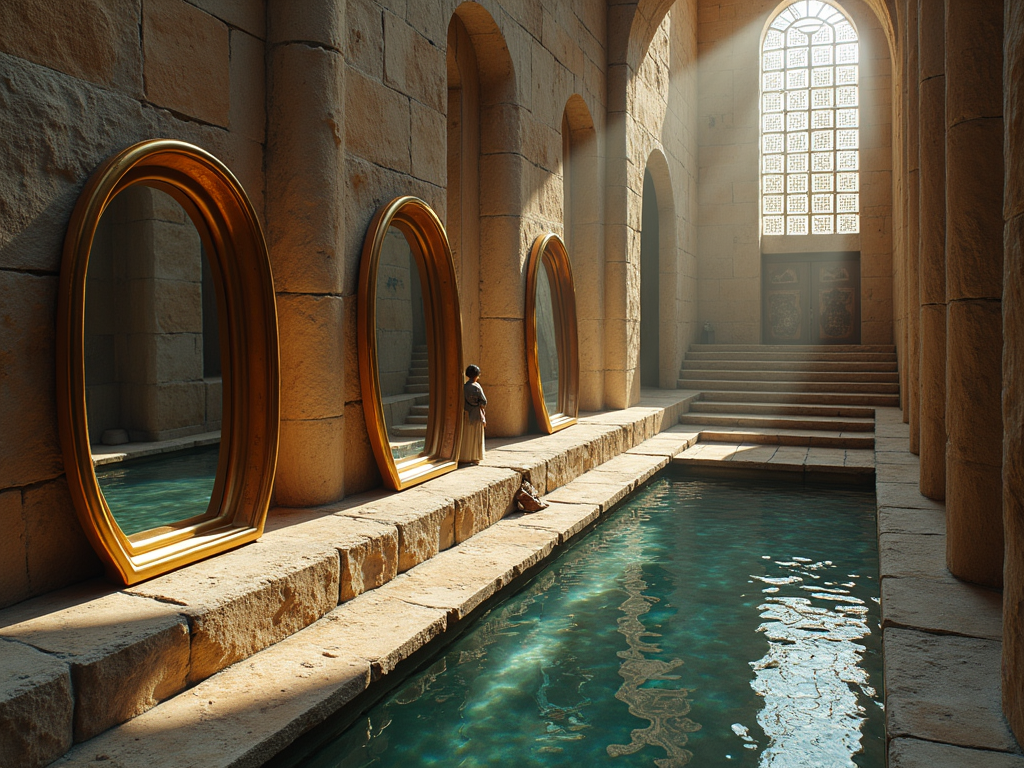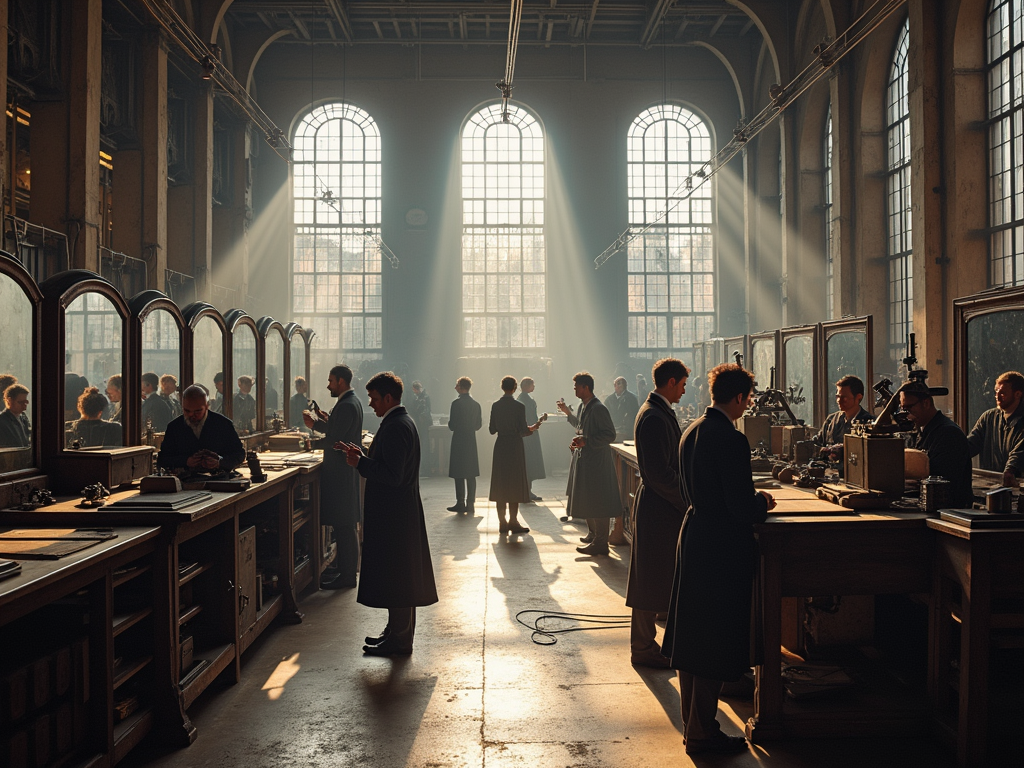
Mirrors have reshaped how humans view themselves and their surroundings. They’ve driven progress in art, science, and culture, all while reflecting the evolution of societies. From early obsidian and copper creations to today’s mass-produced glass versions, mirrors shifted from prized artifacts to everyday essentials that influence individual and collective viewpoints.
Key Takeaways
- Early obsidian and copper mirrors represented wealth, spiritual importance, and emerging self-awareness among privileged groups.
- Glass mirrors, first appearing during Roman times, improved clarity and elevated mirrors to symbols of luxury.
- Venetian advancements in the 16th century, such as refining the silvering technique, boosted mirror quality and encouraged their adoption in art, interior decor, and personal care.
- Industrial Revolution innovations made mirrors affordable for most households and integral to science and transportation.
- Mirrors have shaped how people see themselves and the world, influencing personal reflection, artistic expression, and societal beauty norms.
The story of mirrors begins with simplicity. Still pools of water were likely humanity’s first reflective surfaces, inspiring awe and curiosity. By around 6000 BC, people in Anatolia began crafting mirrors from polished obsidian, a volcanic glass. These early artifacts, though small, offered a new way to see oneself and became treasured possessions. Later, around 4000–3000 BC, polished copper mirrors emerged in Mesopotamia and Egypt, signaling an advancement in materials and craftsmanship.
These early mirrors weren’t just tools; they symbolized wealth and status. Their rarity made them exclusive items, often owned by elites. In Egypt, for example, polished copper mirrors frequently appeared in burial tombs, suggesting their importance for guiding souls in the afterlife. Elaborate designs often linked mirrors to deities and emphasized their spiritual significance. They played active roles in rituals where reflection was believed to connect the physical and divine worlds.
Comparing Materials: Obsidian vs. Copper
Each material had its strengths and drawbacks. Obsidian offered clearer reflections but was fragile and limited in size. Polished copper, on the other hand, was more durable yet prone to tarnishing, requiring constant maintenance. Both shared limitations of distortion compared to modern mirrors. Size restrictions also meant these objects were more functional for personal grooming than grand reflections.
The Broader Impact of Mirrors
More than tools, mirrors encouraged humans to engage with self-awareness, sparking abstract thought and identity exploration. To think, ancient civilizations achieved all this before advances like glass mirrors—something I reflected on while learning about the fascinating history of when mirrors were invented.
The Glass Revolution: From Roman Luxury to Venetian Artistry
Glass mirrors first appeared around the 1st century AD in modern-day Lebanon. Roman craftsmen elevated their value by introducing blown glass techniques and backing the glass sheets with molten lead or tin. These advancements made mirrors not just functional but objects of luxury, accessible only to the wealthiest. Imagine owning a mirror back then; it wasn’t just practical—it was a status symbol.
Fast-forward to the 16th century, Venice became the epicenter of refined mirror-making. Venetian artisans perfected the silvering process using mercury and tin amalgams. This method produced a reflective surface far superior to Roman techniques, making mirrors clearer and more durable. While still exclusive, Venetian mirrors were groundbreaking in their quality and began shaping both commerce and culture.
The Venetian silvering process flourished because glassblowing also transformed. Blown glass could be created in larger, thinner sheets, giving artisans room to experiment with form and size. Mirrors became a centerpiece in homes, palaces, and even smaller spaces, influencing the way people approached design. They weren’t just tools to check appearances—they were art.
Artists like Caravaggio began incorporating mirrors into their work, leveraging their reflective properties to explore perspective and light. Similarly, the burgeoning interest in optics pushed mirrors into the spotlight, not just in homes but in emerging scientific study. This period birthed innovations that made mirrors essential in both personal spaces and public spheres. Their prominence in interior design continues today, as seen in pieces like a heavy mirror anchoring a modern living room. For tips on securely mounting these, check out how to hang a heavy mirror.

The Renaissance Mirror: A Tool for Art and Identity
During the Renaissance, mirrors took on a new significance, shaping both art and the way individuals saw themselves. Artists used mirrors to achieve greater precision in perspective, light, and reflection. The convex mirror in Jan van Eyck’s “Arnolfini Portrait” exemplifies how mirrors brought depth and realism into artwork, capturing intricate details and lifelike representations.
This period also saw the emergence of self-portraiture, fueled by mirrors’ ability to reflect an artist’s likeness back with accuracy. Mirrors didn’t just transform technique; they supported the rise of humanism by encouraging a focus on individuality. Personal identity became a key theme, reflected in both art and culture.
People began using mirrors as tools for self-exploration, fostering a sense of self-awareness that hadn’t been as pronounced before. They became more than objects—they were gateways to reimagine creativity and individuality, profoundly influencing human perception.

The Industrial Revolution brought mirror-making out of exclusivity. Technological advancements, like mechanized manufacturing, transformed mirrors from luxuries into everyday items. Mass production cut costs. Suddenly, mirrors weren’t just for the wealthy. Innovations like aluminum silvering replaced earlier, less durable methods, producing clearer and longer-lasting reflections.
Inexpensive, high-quality mirrors revolutionized more than just homes. They powered scientific breakthroughs, finding essential roles in telescopes, microscopes, and later, everyday automotive marvels like rearview mirrors. Their accuracy and availability pushed forward industries dependent on precision optics.
In architecture, mirrors went beyond décor. They amplified natural light, making interiors feel more open and inviting. Designers loved their ability to shape perceptions of space. If you’re interested in hanging one yourself, check out this guide on how to hang a heavy mirror. From practicality to inspiration, mirrors proved their worth in countless avenues.

The Psychological Power of Reflection: Mirrors and Self-Perception
Jacques Lacan described the “mirror stage” as a turning point in how we see ourselves. He argued that as children recognize themselves in a mirror for the first time, they begin to form their sense of self. I find this idea fascinating because it highlights how mirrors are more than just tools; they’re gateways to self-awareness.
Over time, mirrors have shaped our relationship with appearance and identity. They play a dual role in our lives. On one hand, they help boost self-esteem by allowing us to present the best version of ourselves. On the other, they’ve fueled societal beauty ideals that aren’t always kind. Mirrors let us assess how we conform to—or deviate from—those standards. For some, this has been empowering, while for others, it’s led to harmful effects, like body dysmorphia and unrealistic self-comparison.
But mirrors go beyond the surface. They’re tools for introspection, too. I’ve used them to take a few moments to reflect on mood or expressions, often picking up nuances I hadn’t consciously noticed. In modern life, with endless selfie culture and tech-driven enhancements, mirrors have retained this role as personal checkpoints.
If you’d like to learn more about the unique attributes of mirrors or their history, you’ll find this article on what color is a mirror truly intriguing. It’s always worth exploring a tool that shapes us so deeply.
Sources:
Oxford University Press – “The Mirror: A History”
Cambridge University Press – “Seeing Ourselves: Self-Portraiture in the Renaissance”
Princeton University Press – “The Genie in the Bottle”
MIT Press – “Écrits”
